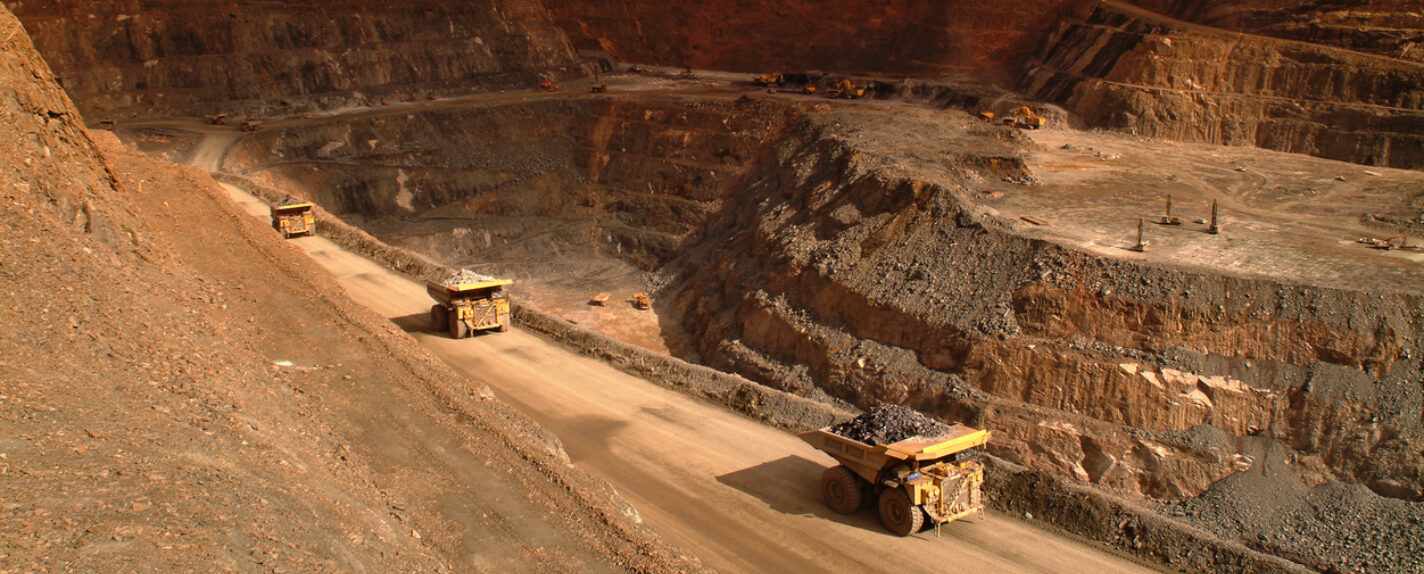‘Good Samaritan’ Act Kickstarts Hardrock Mine Cleanups

Newsletter Articles
For decades, stakeholders have been working towards legislation to encourage the cleanup of abandoned mining sites without fear of incurring legal liability. On December 17, 2024, these efforts finally paid off when President Biden signed the Good Samaritan Remediation of Abandoned Hardrock Mines Act (the “Act”) into law.[i]
There are estimated to be more than 140,000 abandoned hardrock mine sites on federal lands, including some 22,500 sites that pose serious dangers to the communities around these sites.[ii] The Act provides limited liability protections for so-called “Good Samaritans” like nonprofits, private organizations, and local governments that work to clean up these abandoned hardrock mines. Specifically, the Act provides protection from liability under the Federal Water Pollution Control Act (33 U.S.C. § 1251 et seq.) (“Clean Water Act” or “CWA”) and the Comprehensive Environmental Response, Compensation, and Liability Act (42 U.S.C. 9601 et seq.) (“CERCLA”), during and after the permit term (for both Good Samaritan Permits and Investigative Sampling Permits), and after declining to convert an investigative sampling permit to a Good Samaritan permit.[iii] Good Samaritans are also provided an exemption from compliance with several requirements under the Clean Water Act, including the need to obtain a permit under CWA §§ 402 or 404; they also enjoy the permit exemption provided under CERCLA § 121(e). Thus, a Good Samaritan permittee does not need to obtain a federal, state, or local permit for any removal or remedial action conducted entirely onsite.[iv]
The Act applies to “abandoned hardrock mine sites” which are defined as abandoned or inactive mines sites (including any facility associated with the mine site) that were used for the production of a mineral (excluding coal) on federal land under the Mining Law of 1872 (Revised Statutes §§ 2319–2352) for which there is no responsible owner or operator who is potentially liable for environmental remediation under applicable laws. This definition would preclude a person or entity who is unconnected with the abandoned hardrock mine from obtaining a Good Samaritan Permit if there is another person or entity who is potentially liable for remediation at that same abandoned hardrock mine site. Federal land management agencies are not “responsible owners or operators” as long as the agency has not been involved in mining activity beyond approval of operations under hardrock mining regulations.[v]
Abandoned or inactive mines do not include mines that are temporarily shut down.[vi] The Act also excludes mine sites that: are on the National Priorities List (NPL); are subject to a planned or ongoing response under CERCLA;[vii] have a responsible owner or operator who is potentially liable for remediation and financially able to comply with applicable cleanup requirements; or actively mined or processed minerals after December 11, 1980.[viii]
The bill had been introduced by Sens. Martin Heinrich (D-N.M.) and James Risch (R-Idaho) in the Senate and Reps. Mary Peltola (R-Alaska), Celeste Maloy (R-Utah), and Susie Lee (D-Nev.) in the House. The Act passed with bipartisan support over concerns raised by one member regarding the possibility that the Act would shield “bad actors” who took advantage of the Act’s protections and Good Samaritans who did an inadequate job in remediation and worsened environmental conditions at abandoned mining sites.[ix] EPA had also expressed skepticism about the scope of liability protection, believing the existing Superfund program was up to the task of managing these sites.[x]
Good Samaritan Permits
The Act requires EPA to develop a permit system that will issue permits for seven years from December 17, 2024.[xi] Any individual, private entity, NGO, state, municipality, political subdivision of a state, or any interstate body that is not a past or current owner or operator of the abandoned mining site, had no role in the creation of the historic mining residue, and is not potentially liable for the remediation, control, or treatment of the historic mining residue is eligible to apply for a Good Samaritan Permit. A Good Samaritan Permit allows a Good Samaritan to remediate hardrock mine residue without CERCLA or CWA liability associated with baseline conditions.[xii] A permit may allow for the reprocessing or recycling of historic mine residue, but the proceeds from the sale or use of the materials must be used to offset the costs of remediation and reimburse the EPA or federal land management agency as required under the permit. Any remaining proceeds must be deposited into the Good Samaritan Mine Remediation Fund.[xiii] A Good Samaritan Permit may not authorize mineral exploration, processing, beneficiation, or mining.[xiv] If a Good Samaritan “commingles or associates”[xv] the permitted discharge or waste with other mining waste or discharge that is not covered under the Good Samaritan Permit, the other waste or discharge is not protected, and full federal, state and local permitting requirements apply to that waste or discharge.[xvi]
Violation of a permit term or condition may result in a loss of the liability protections under the Act if environmental conditions are measurably worse than baseline conditions as a result of the violation.[xvii] Before liability protections are lost, the EPA must notify the Good Samaritan of the failure to comply with the permit and require the person to take reasonable actions to return environmental conditions to baseline.[xviii]
EPA has been tasked with setting up a pilot program that would grant up to fifteen Good Samaritan Permits.[xix] The applicant and any cooperating persons must submit an application to EPA which includes: a description of the abandoned hardrock mine site; a description of all parties proposed to be involved in the remediation project, including the members of any applicable entity; evidence that the applicant has or will acquire the rights necessary to enter the site and perform the remediation; description of the historic mine residue; a detailed description of the expertise and experience of the person and the resources available to remediate the site; a description of baseline conditions; a detailed remediation plan; a timeline for the remediation work; a site specific health and safety plan; a contingency plan; a project budget and a demonstration of sufficient resources available to complete the work; a detailed operation and maintenance plan of any remediation; any post-remediation monitoring, if necessary; and any other information required by EPA.[xx]
Investigative Sampling Permits
Prior to seeking a Good Samaritan Permit, an interested person may obtain an investigative sampling permit (also limited to fifteen total at any one time) to conduct an investigation of historic mine residue, soil, sediment, or water to determine baseline conditions and whether the prospective applicant is willing to perform remediation to address the historic mine residue.[xxi] An investigative permit may not allow reprocessing of mining residue, but it may authorize metallurgical testing of historic mine residue to determine whether reprocessing is feasible.[xxii] An investigative permit does not obligate the person to remediate the site, and the person will still receive the legal protections for the work conducted under the investigative permit.[xxiii]
Conclusion
The Good Samaritan Remediation of Abandoned Hardrock Mines Act provides liability protection and permit exceptions designed to facilitate both investigation and remediation of abandoned hardrock mine sites. The Act applies to a broad range of persons or entities. Even for-profit exploration and mining companies are potentially eligible to apply for a Good Samaritan permit. Those who only investigate, but ultimately decline to remediate the abandoned hardrock mine site under a Good Samaritan Permit are still granted full liability protection. Because the Act establishes a permitting system, it remains to be seen how and when these permits will be available and what types of permit conditions are imposed. It will be important to follow the development of the permitting system to determine if the EPA is carrying out the intent of Congress under this Act. Once permits are issued, the Act requires permitted entities to prevent environmental degradation during investigations and remediation by eliminating liability protections if there is a failure to comply with a permit term or condition and that failure results in environmental conditions that are measurably worse than baseline conditions.[xxiv] Importantly, like other environmental statutes, the permittee is given an opportunity to cure its failure to comply with the permit before losing the protections of the Act.
For more information about Marten’s mining and critical minerals practice, please contact Albert Barker, Brian Daluiso, Terry Uhling, Bryce Brown, or Victor Xu.
[i] Press Release, The White House, Bill Signed: S. 50, S. 310, S. 1478, S. 2781, S. 3475, S. 3613 (Dec. 17, 2024), available at https://www.whitehouse.gov/briefing-room/legislation/2024/12/17/press-release-bill-signed-s-50-s-310-s-1478-s-2781-s-3475-s-3613/.
[ii] 170 Cong. Rec. H6577 (daily ed. Dec. 10, 2024) (Statement of Rep. Russ Fulcher)
[iii] S. 2781, Sec. 4(n).
[iv] The Good Samaritan is responsible for securing “all authorizations, licenses, and permits that are required under applicable law except for…authorizations, licenses, permits that would not need to be obtained if the remediation was conducted pursuant to section 121 of [CERCLA].” Section 121 of CERLCA, in relevant part, provides “No Federal, State, or local permit shall be required for the portion of any removal or remedial action conducted entirely onsite, where such remedial action is selected and carried out in compliance with this section.”
[v] S. 2781, Sec. 2(1).
[vi] The Act does not define “temporarily shutdown” and does not provide timelines for when a site is temporarily shutdown or abandoned.
[vii] But includes sites where there is a completed response action under CERCLA or a similar Federal or State cleanup. S. 2781, Section 2(1)(b).
[viii] S. 2781, Sec. 2(1).
[ix] 170 Cong. Rec. H6577 (daily ed. Dec. 10, 2024) (Statement of Rep. Frank Pallone)
[x] Id.
[xi] EPA may issue permits to entities that applied for a permit at least six months before December 17, 2031 so long as the application was deemed completed by December 17, 2031.
[xii] S. 2781, Sec. 4(n)(1).
[xiii] S. 2781, Sec. 4(f)(4)(B)
[xiv] S. 2781, Sec. 4(f)(4)(A).
[xv] The Act does not define “commingle” or “associate.” It only provides that: “The commingling or association of any other discharge of water or historic mine residue or any activity, project, or operation conducted on or after the date of enactment of this Act with any aspect of a project subject to a Good Samaritan permit shall not limit or reduce the liability of any person associated with the other discharge of water or historic mine residue or activity, project, or operation.” S. 2781, Sec. 4(f)(4)(C).
[xvi] S. 2781, Sec. 4(f)(4)(C).
[xvii] S. 2781, Sec. 4(n)(3)(E).
[xviii] S. 2781, Sec. 4(n)(3)(F).
[xix] S. 2781, Sec. 4(a)(1).
[xx] S. 2781, Sec. 4(c).
[xxi] S. 2781, Sec. 4(d)(1).
[xxii] Exploratory drilling, e.g., for metallurgical analysis testing of the historic mine residue, can be included in the permit. Exploratory drilling for new materials or drilling to obtain materials for reprocessing is not permitted under the investigative permit. See S. 2781, Sec. 4(d)(4).
[xxiii] S. 2781, 4(d)(6)(B).
[xxiv] S. 2781, Sec. 4(n)(3)(E)–(F).
Newsletter Articles
Authors
Related Services and Industries
Authors
Related Services and Industries
Stay Informed
Sign up for our law and policy newsletter to receive email alerts and in-depth articles on recent developments and cutting-edge debates within our core practice areas.

